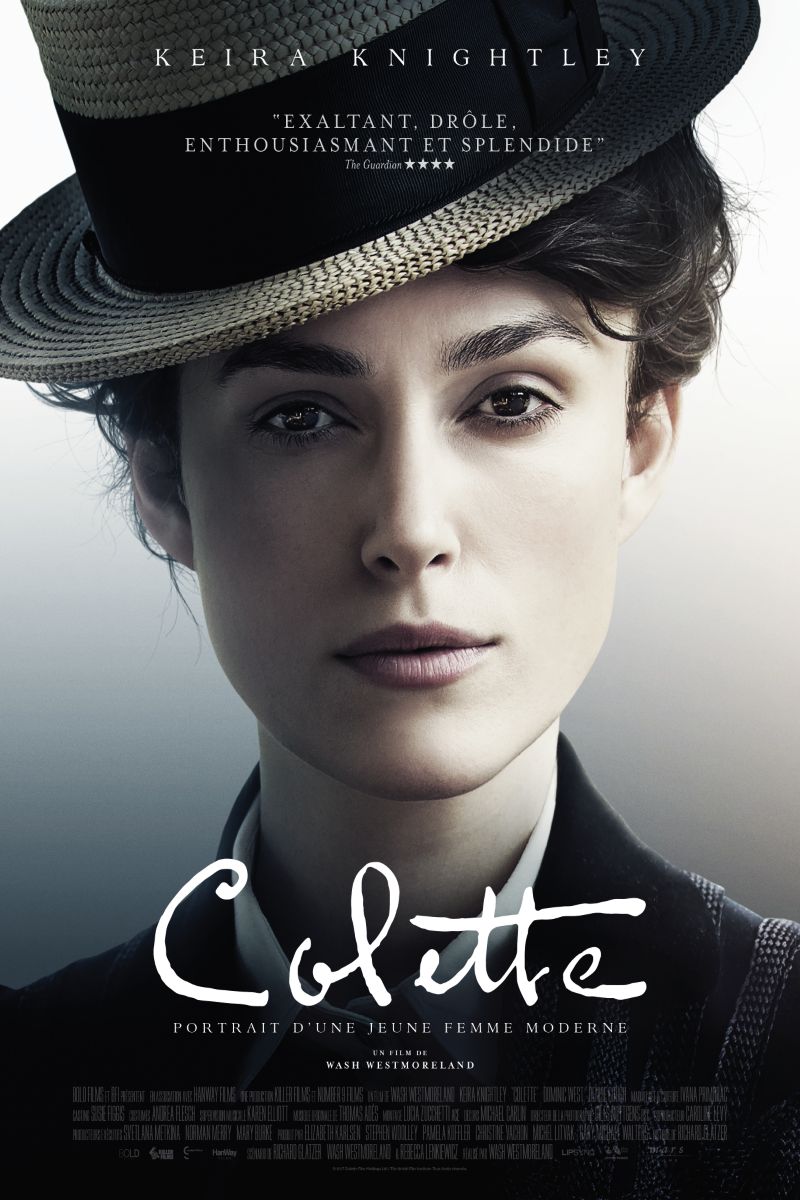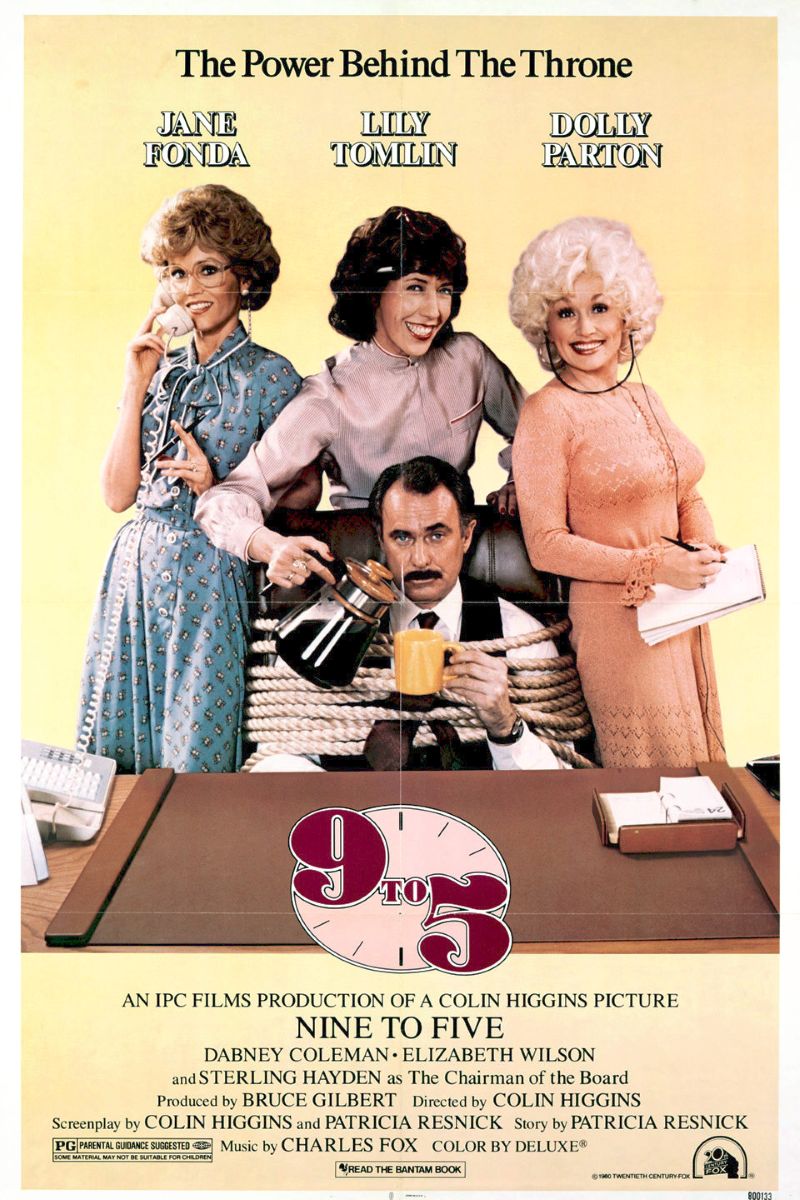
Colette
Colette
A biographical drama about 19th-century French writer Sidonie-Gabrielle Colette's growth and awakening. Keira Knightley brilliantly portrays this pioneering female writer who challenged gender norms, fought for authorial credit, and explored gender fluidity in her legendary life.
Cast
Related Topics
🎥 Film Analysis & Review
In late 19th-century Paris, when women’s voices were still systematically silenced, Sidonie-Gabrielle Colette (Keira Knightley) used her pen to tear through the hypocritical facade of her entire era. “Colette,” directed by Wash Westmoreland, serves not merely as tribute to a legendary female writer’s life but as profound exploration of one of literary history’s most important feminist awakening stories. Through its meticulous depiction of the struggle for authorial credit, this film provides historical reference for contemporary discussions about workplace equality and intellectual property, while demonstrating through Colette’s bold challenge to gender boundaries how a woman reclaimed her narrative power in a patriarchal society.
From Country Girl to Parisian Pioneer
Colette’s story begins in rural Burgundy, but her true awakening occurs in Paris’s literary salons. When she married the famous writer Henry Gauthier-Villars (pen name “Willy,” played by Dominic West) at age 15—he was 14 years her senior—she remained an innocent country girl. However, Parisian cultural life quickly awakened her inherent creative talent and keen observation of the world.
The film precisely captures the subtle process of this transformation. Colette evolves from initial adoration and dependence on her husband to developing independent thinking abilities and creative impulses. Her observations of Parisian society transform from initial surprise and discomfort to profound insight and criticism. This growth isn’t linear but filled with contradictions, setbacks, and the painful process of self-discovery.
After Willy recognizes his wife’s writing talent, he encourages her to create semi-autobiographical novels. However, he insists on publishing these works under his own name—a decision that becomes the film’s central conflict. Colette’s first novel “Claudine at School” achieves enormous success, but the public and critics all believe it’s Willy’s work. This identity displacement represents not only economic exploitation but systematic denial of women’s creative capabilities.
The Historical Significance of Authorial Rights
“Colette’s” portrayal of the struggle for authorial credit carries profound historical significance, revealing mechanisms that have long marginalized women in literary history. Willy’s behavior represents not merely personal greed but society’s broader distrust and appropriation of women’s creativity. In late 19th-century France, while female writers had emerged, their works were often classified as secondary, emotional, lacking “true” literary value.
Colette’s “Claudine” series caused sensation precisely because it demonstrated unprecedented female subjectivity. These works didn’t depict women from the perspective of the male gaze but started from women’s own experiences and feelings, portraying adolescent awakening, emerging desires, and questioning of authority. This writing approach was revolutionary for its time, challenging male-centrism in literary tradition.
Through careful cinematography, the film shows Colette’s state during creation—she isn’t passively executing Willy’s demands but completely immersed in her inner world, excavating the most authentic feelings from memory’s depths. This creative process itself becomes an act of self-discovery and self-affirmation that cannot be replaced or appropriated by anyone else.
Deconstructing Marriage Power Relations
The marriage relationship between Colette and Willy represents another important dimension the film explores. This relationship contains both genuine emotional foundation and obvious power inequality. Willy, as an established male writer, holds advantages in knowledge, social status, and economic capacity. Colette’s initial acceptance of this unequal relationship reflects societal expectations for women’s dependency.
However, as Colette’s creative talents emerge and self-awareness awakens, this power relationship begins subtle changes. Her works bring Willy fame and wealth, and this economic contribution grants her greater voice. But this change also brings new contradictions—Willy both appreciates his wife’s talents and fears losing control over her; Colette both enjoys the satisfaction creation brings and suffers from inability to receive due recognition.
The film’s portrayal of this complex relationship avoids simple moral judgment. Willy isn’t purely villainous, nor is Colette a perfect victim. Their relationship reflects an era’s limitations and individuals’ struggles amid changing times. This nuanced portrayal gives the film sociological value beyond personal biography.
Pioneering Exploration of Gender Fluidity
“Colette’s” most forward-looking aspect is its exploration of blurred gender boundaries. Colette refuses to be satisfied with traditional female role definitions; she begins experimenting with masculine dress, cuts her hair short, wears trousers, and challenges gender norms through behavior and mannerisms. This change isn’t merely external but reflects her deep contemplation of gender identity.
Colette’s relationship with Missy de Morny (Eleanor Tomlinson) in the film further demonstrates her exploration of gender fluidity. This lesbian relationship doesn’t exist to cater to the male gaze but represents an important component of Colette’s self-exploration. Through intimate relationships with women, she discovers the diversity of her emotions and desires while re-examining traditional marriage’s limitations.
This exploration of gender fluidity was extremely subversive in its social context. Though late 19th-century Paris was relatively open, expectations for gender roles remained very strict. Colette’s behavior challenged not only social norms but her own class identity and social status. Her willingness to risk social condemnation to pursue authentic selfhood demonstrates courage that remains admirable today.
Artistic Creation’s Autonomy
As the plot develops, Colette gradually realizes the importance of artistic creative autonomy. She no longer settles for merely being Willy’s ghostwriter but demands recognition as the rightful creator. This demand concerns not only fame and economic interests but her dignity and independence as an artist.
Through Colette’s insistence on the creative process, the film demonstrates the difference between true artists and mere commercial writers. Colette writes not just to earn money or please her husband but to express her unique life experiences and worldview. This internal drive cannot be replaced by others, nor should it be appropriated by them.
When Colette finally decides to leave Willy and develop independently, she’s actually fighting for rights of all suppressed female creators. Her struggle is both personal and symbolic—representing women’s insistence on their own voices and firm belief in their creativity.
Literary Style’s Breakthrough Nature
Colette’s writing style itself embodies feminism. Her novels use first-person narration to directly and honestly explore women’s inner worlds, desires, and confusion. This writing approach breaks from Victorian literature’s idealized treatment of women’s experiences, revealing authentic, complex female subjectivity.
The success of the “Claudine” series lies in presenting unprecedented female perspectives. Claudine as a character is both innocent and sophisticated, rebellious yet vulnerable—this complexity reflects Colette’s profound insight into female psychology. She doesn’t portray women as singular images of angels or demons but reveals women’s multifaceted nature as complete human individuals.
Through Colette’s creative process, the film helps audiences understand how this breakthrough style formed. Colette draws material from her life experiences—her rural childhood, Parisian social life, and complex emotional relationships all become creative sources. This writing method emphasizes personal experience’s value, which was revolutionary in male-dominated literary tradition.
Fashion and Gender Expression
The film’s meticulous portrayal of Colette’s clothing and appearance changes reveals fashion’s importance as a tool for gender expression. From initial traditional women’s clothing to later androgynous dress, each image change marks a new stage in her internal awakening.
She begins cutting her hair short and wearing men’s clothing—these external changes represent not merely fashion choices but direct challenges to gender norms. In an era that strictly differentiated gender through clothing, Colette’s dress choices carried strong political significance. Through fashion, she proclaimed her independence and refused to be simply categorized into traditional female roles.
This use of fashion also reflects Colette’s aesthetic sensitivity. She doesn’t blindly imitate men but creates her own aesthetic style. This style maintains feminine charm while possessing masculine strength—this synthesis perfectly embodies her character.
Social Class and Cultural Capital
The film also skillfully handles social class’s influence on women’s liberation. Colette comes from a relatively lower social class, and her liberation process must occur under the dual constraints of economic pressure and social expectations. Unlike aristocratic women with independent property, Colette must achieve economic independence through her own labor.
This class background makes her struggle more complex and meaningful. She cannot simply refuse to work or rely on family wealth like wealthy women; she must ensure her survival while pursuing creative autonomy. This dual pressure makes her success more precious while providing a more realistic role model for other working women.
Willy uses Colette’s economic dependence to control her—a control method still common today. Economic independence as the foundation of women’s liberation receives vivid embodiment in Colette’s story. Only when she could maintain her livelihood through her own writing did she truly gain the ability to dialogue with Willy as an equal.
Contemporary Relevance and Historical Value
“Colette” holds important implications for contemporary feminist movements. Problems Colette faced—stolen creation, ignored talent, suppressed voice—still exist today. From academia’s “Matthew Effect” to workplace gender discrimination, from media industry “glass ceilings” to creative industry inequalities, Colette’s struggle provides historical reference for contemporary women.
The film also reminds us that women’s liberation isn’t achieved overnight but requires continuous efforts passed down through generations. Colette’s success paved the way for later female writers, just as today’s women’s efforts will affect future women. This historical continuity gives every woman’s struggle meaning beyond the personal.
Keira Knightley’s outstanding performance breathes vibrant life into this historical figure. She shows both Colette’s talent and charm while not idealizing the complexity and contradictions in her character. This authentic character portrayal makes Colette no longer a distant historical icon but a relatable female image.
Contemporary Workplace Parallels
The film’s exploration of creative ownership and professional recognition resonates strongly with contemporary workplace issues. The phenomenon of women’s contributions being attributed to male colleagues, supervisors, or collaborators remains widespread across industries. Colette’s insistence on receiving credit for her work provides a historical precedent for modern discussions about gender equity in professional settings.
The power dynamics between Colette and Willy also illuminate how economic dependency can be weaponized to maintain control over creative workers. This pattern extends beyond marriage to employer-employee relationships, publishing contracts, and collaborative creative projects where power imbalances enable exploitation.
Artistic Integrity and Commercial Success
The film demonstrates how artistic integrity and commercial viability need not be mutually exclusive. Colette’s novels succeed both critically and commercially precisely because of their authentic female perspective rather than despite it. This success challenges assumptions about what kinds of stories and voices can achieve mainstream appeal.
The tension between artistic vision and market demands remains relevant for contemporary creators, particularly women and marginalized voices who may face pressure to conform to established formulas or allow others to shape their artistic expression to increase commercial appeal.
Legacy and Influence
Colette’s eventual recognition as a major literary figure validates the importance of persistent advocacy for women’s creative rights. Her influence extended beyond literature to fashion, theater, and cultural attitudes toward gender and sexuality. The film’s portrayal of her journey from obscurity to acclaim illustrates how individual struggles for recognition can contribute to broader social change.
The movie also demonstrates how creative works can outlast the circumstances of their creation. While the specific gender dynamics of late 19th-century Paris may seem distant, Colette’s exploration of female desire, identity, and autonomy continues to resonate with contemporary audiences.
Conclusion
“Colette” succeeds as both historical biography and contemporary feminist statement. Through its careful attention to the mechanisms of creative appropriation and gender oppression, the film illuminates issues that extend far beyond its historical setting. Keira Knightley’s nuanced performance brings complexity and humanity to a figure who could easily become an idealized symbol rather than a believable person.
The film’s greatest achievement lies in demonstrating how personal struggles for recognition and autonomy connect to larger movements for social justice. Colette’s fight for authorial credit represents every creator’s right to ownership of their work, while her exploration of gender identity anticipates contemporary conversations about fluidity and self-determination.
Most importantly, “Colette” reminds us that progress requires both individual courage and collective support. While Colette’s ultimate success may seem inevitable in retrospect, the film effectively conveys the uncertainty, sacrifice, and persistence required to challenge established systems. Her legacy lies not only in her literary achievements but in her demonstration that authentic self-expression, despite social pressure to conform, enriches culture and expands possibilities for future generations.
In that sun-drenched Parisian café, when Colette first signs her work with her own name, she claims not only personal dignity but lights a flame of hope for countless women still silenced. This simple act of signing carries the weight of entire literary history while heralding the beginning of a new era.
🏆 Awards & Recognition
- • Hollywood Film Award Breakthrough Performance Nomination (Keira Knightley)
- • Golden Globe Best Actress Nomination (Keira Knightley)
⭐ Ratings & Links
Related Recommendations
讨论区
分享您的想法和观点
加入讨论
分享您的想法和观点
加载评论中...

